Simple ingredients yield delicious results in this easy Lemon Garlic Baked Salmon recipe, which can be made in 30 minutes or less! Salmon fillets are drizzled with a citrusy garlic butter, topped with fresh lemon slices, wrapped in a foil packet, and oven-baked until tender and flaky. This easy and low-carb seafood dinner shows that elegant weeknight dinners don’t always have to be complicated.
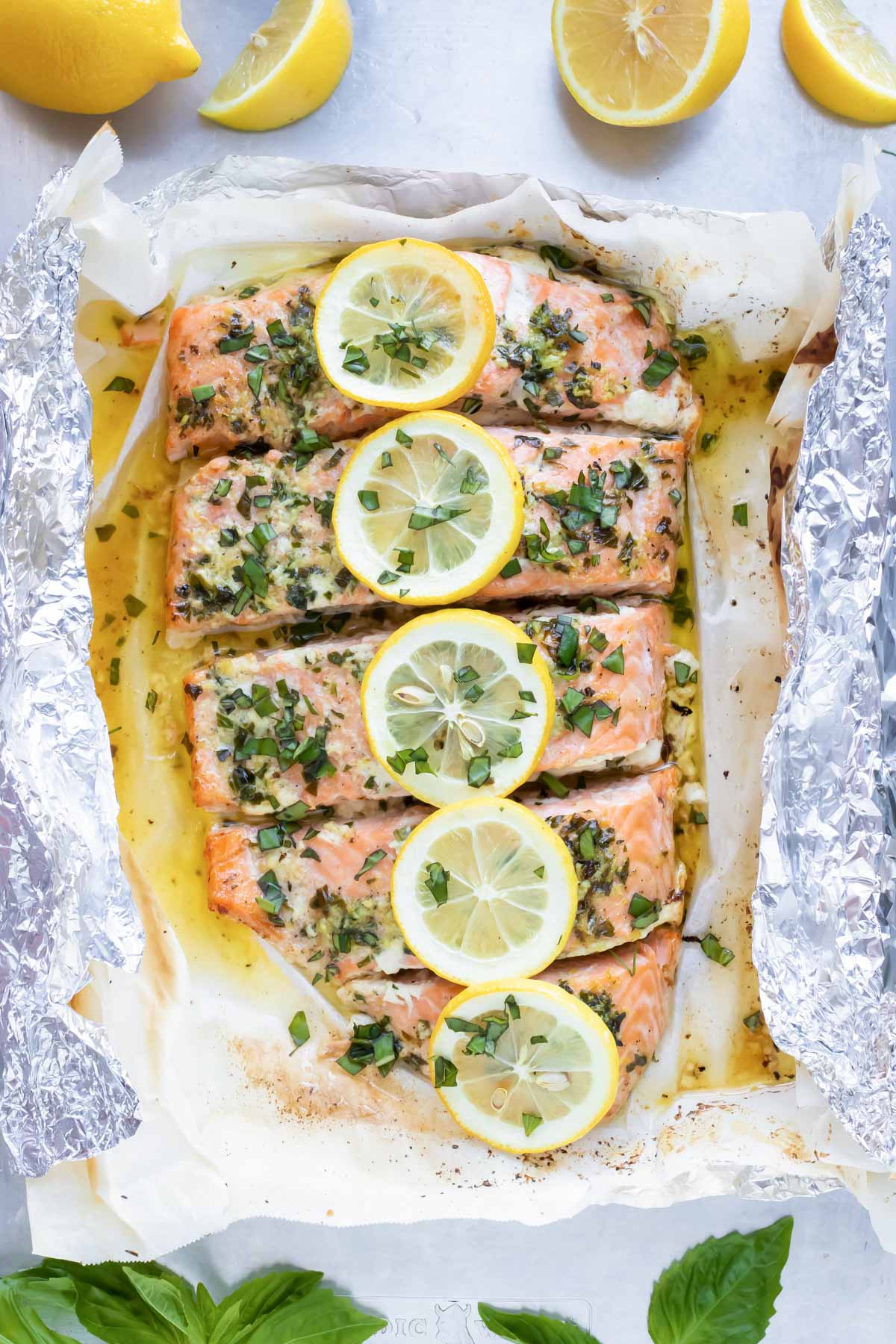
Table of Contents
When winter thaws and the spring season starts, there’s one thing I can never seem to get enough of as the warm weather sets in… the bright, acidic taste of fresh lemons!
And soon enough, there always follows an abundance of fresh, wild-caught salmon at the grocery store. With recipes like Lemon Dill Salmon and Air Fryer Fish coming into season, it’s hard not to take advantage of the match made in heaven that is fresh lemons and even fresher seafood.
With this recipe for Lemon Baked Salmon, these two bright, refreshing ingredients meet rich butter and aromatic garlic and basil, to make a delicious dish all wrapped up to bake in aluminum foil.
Ingredients
For the exact measurements and detailed instructions, you can jump to the recipe.
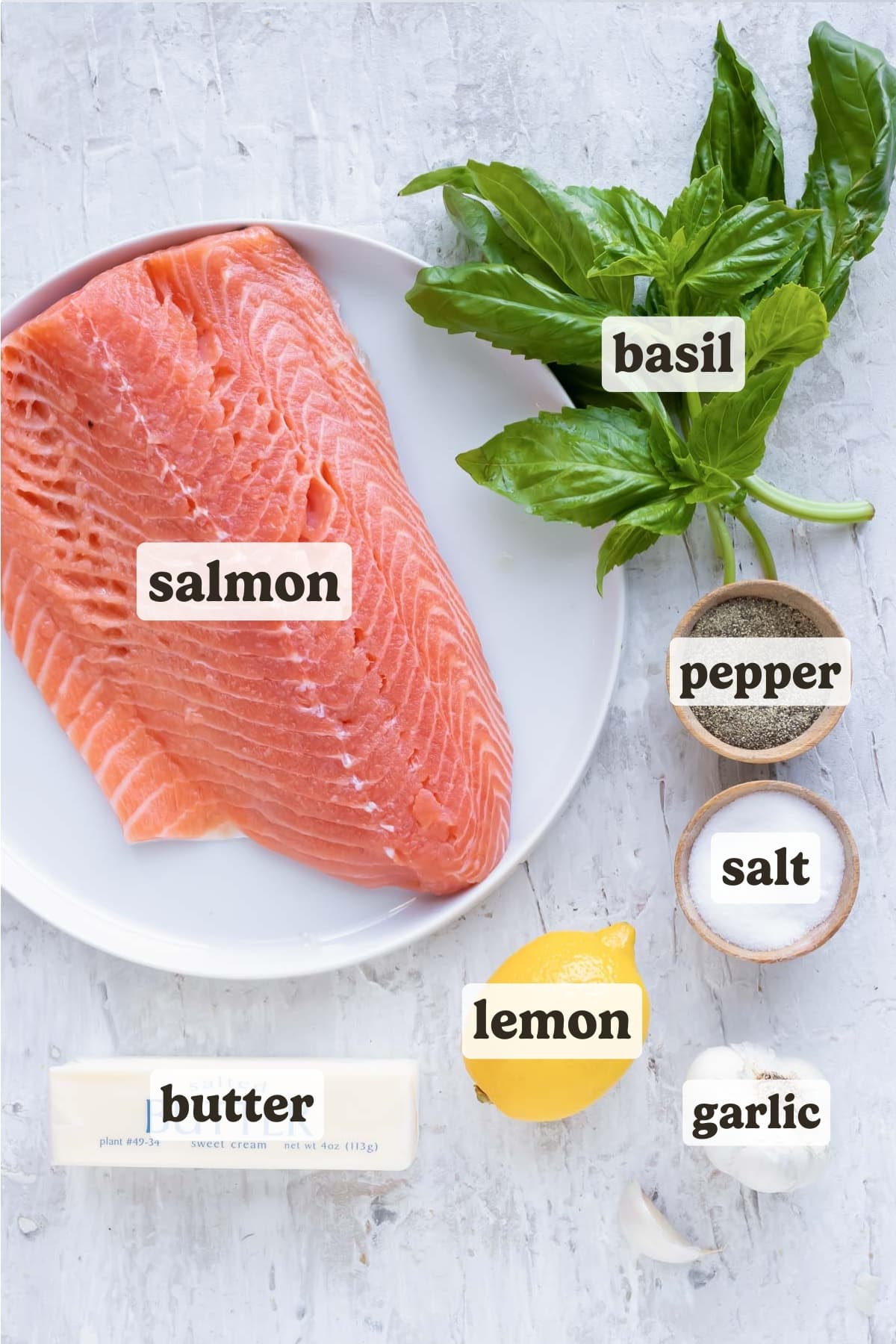
- Salmon. A little over a pound of fresh, wild salmon is used in this recipe, as it has the best taste and texture, but previously frozen or farm-raised Atlantic salmon will do as well. Wild is healthier and has the benefit of a richer nutrient profile from its natural habitat, and farm-raised fresh will have a slightly better flavor and a higher fat content.
- Lemons. Freshly-squeezed, natural juice from a lemon is a key ingredient, bringing acid and bright, tart flavor to the salmon as it cooks. Avoid pre-squeezed, bottled lemon juice; it’s extremely tart, not nearly as fresh, and often contains preservatives. For a different taste, limes or oranges may be used as a substitute.
- Basil. Fresh basil, not dried, is the other star of the show. Sweet basil is preferred but Thai basil may also be used, as can dill or fresh cilantro for a different flavor profile. (Check out more substitutes for basil if you’re coming up short!)
- Butter. A good-quality butter, such as Plugrá or Kerrygold, will take this dish over the top with its rich flavor and high fat content. Feel free to use a non-dairy butter alternative such as vegan “buttery” sticks. You want the flavor, so avoid olive oil if possible.
- Garlic. Fresh garlic cloves give a wonderfully aromatic taste. You can substitute with garlic powder, at ⅛ teaspoon for each clove, but the flavor will be significantly less fresh.
How to Bake Salmon in Foil
Jump to the recipe for the full instructions, ingredient amounts, and a printable recipe.
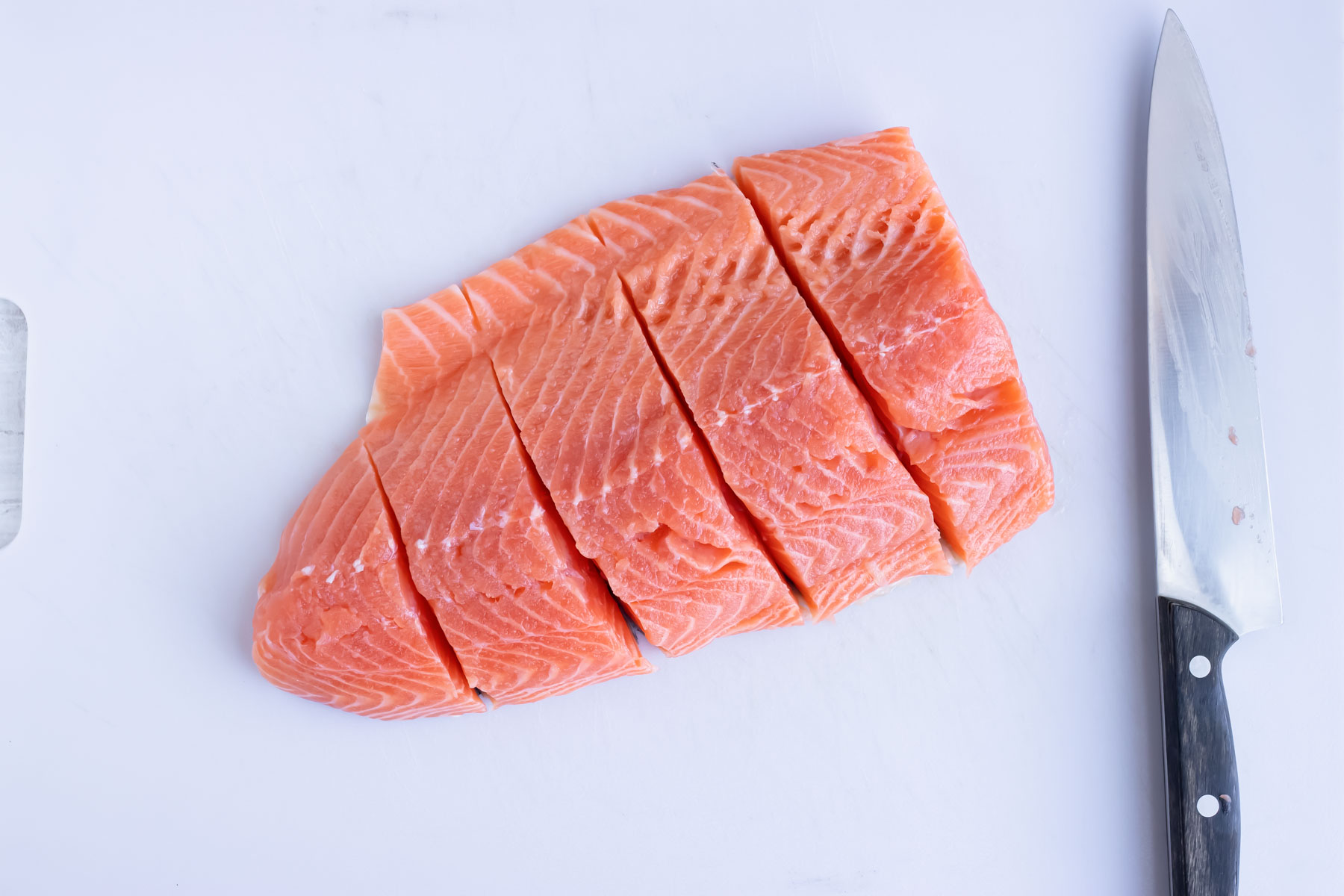
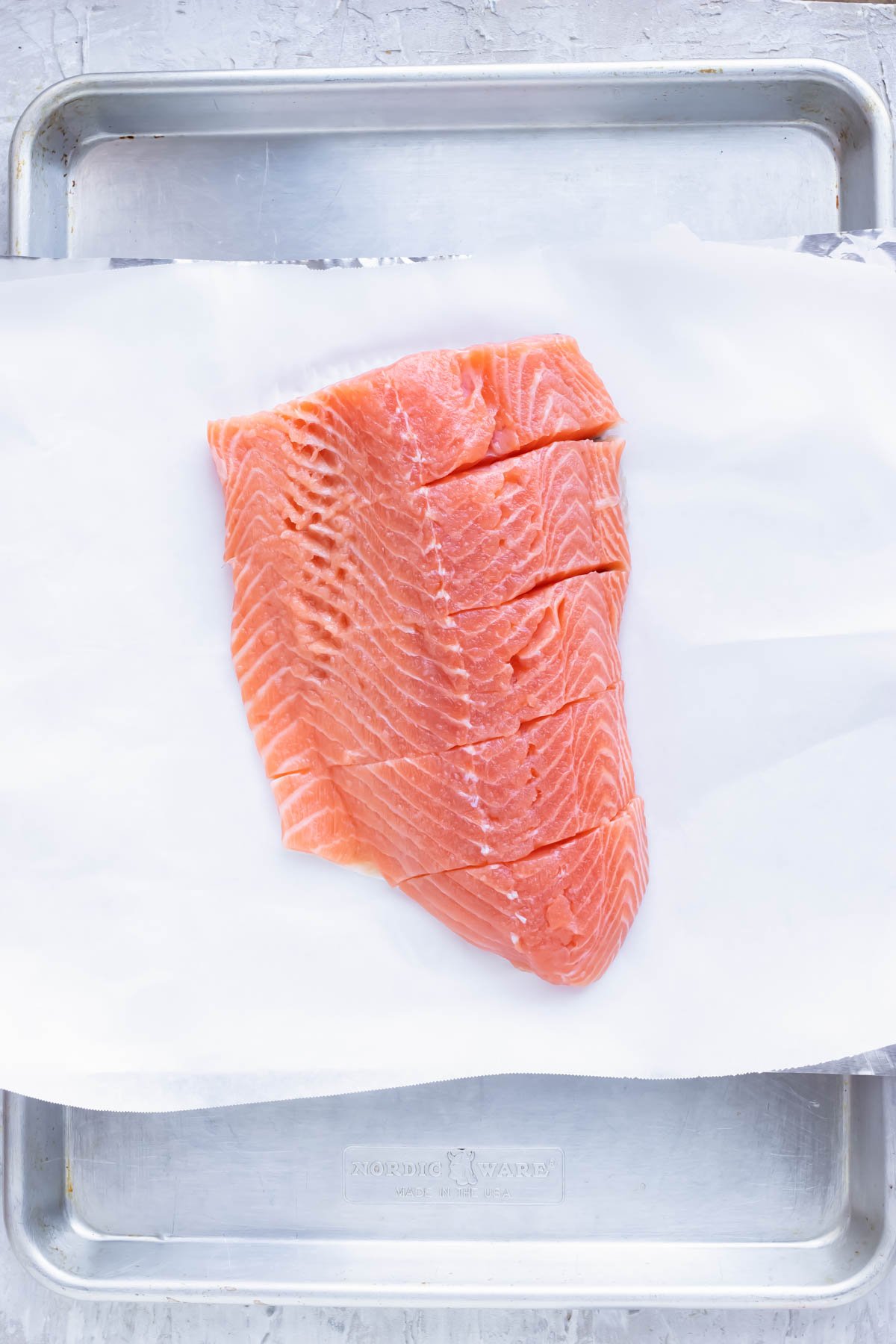
- Slice the salmon. Going crosswise into the filet, cut the fillet into 1½-2-inch portions, depending on weight and preference. A single portion of salmon generally lands between 3-5 ounces in weight.
- Prepare the foil packet. On a large sheet pan, lay out a large sheet of aluminum foil, big enough to wrap around all of the salmon at once. Place another sheet of parchment paper, only slightly smaller than the foil, on top. Lay the sliced fillet out on top of the material for the packet, with a small amount of space left in between the individual portions.
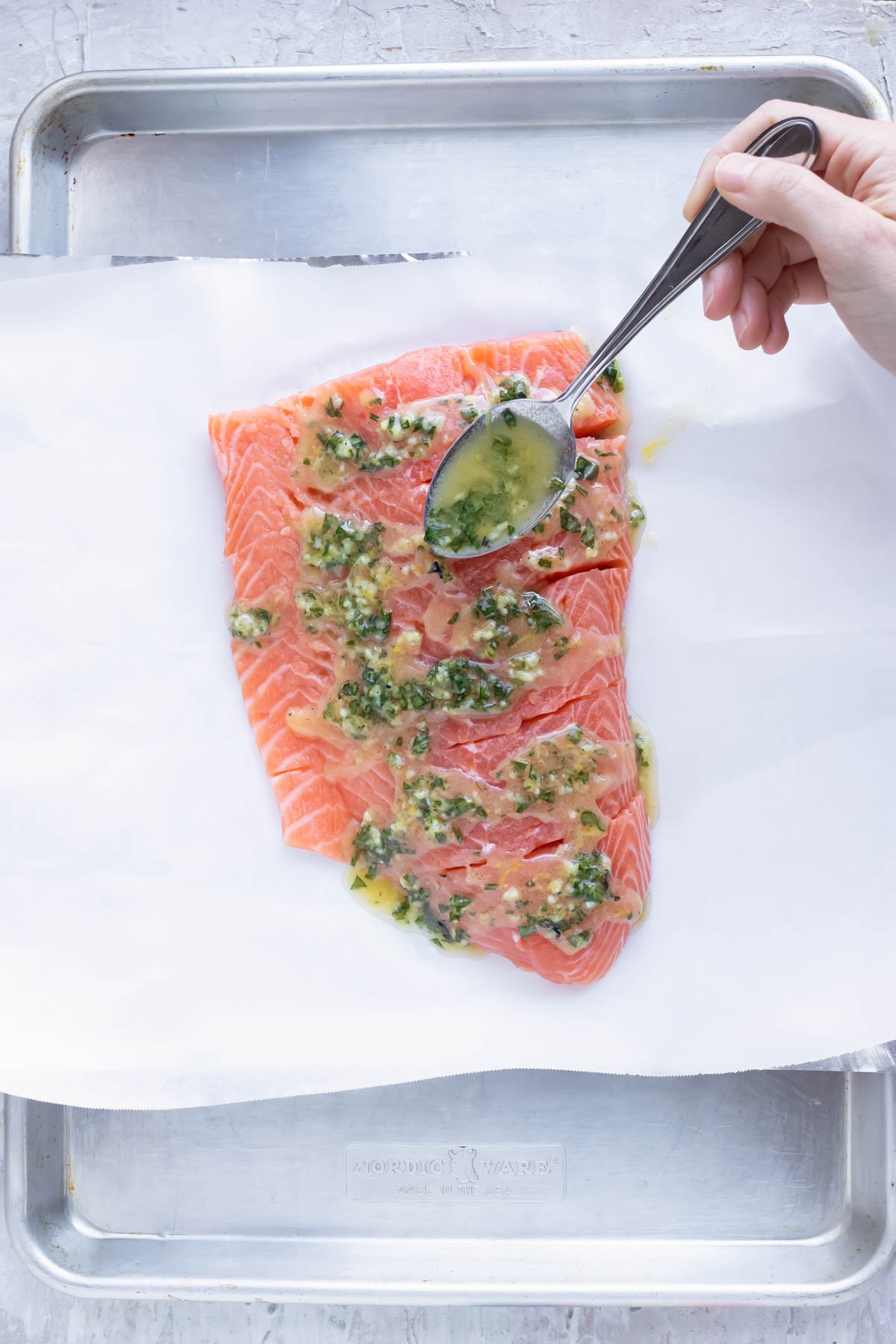
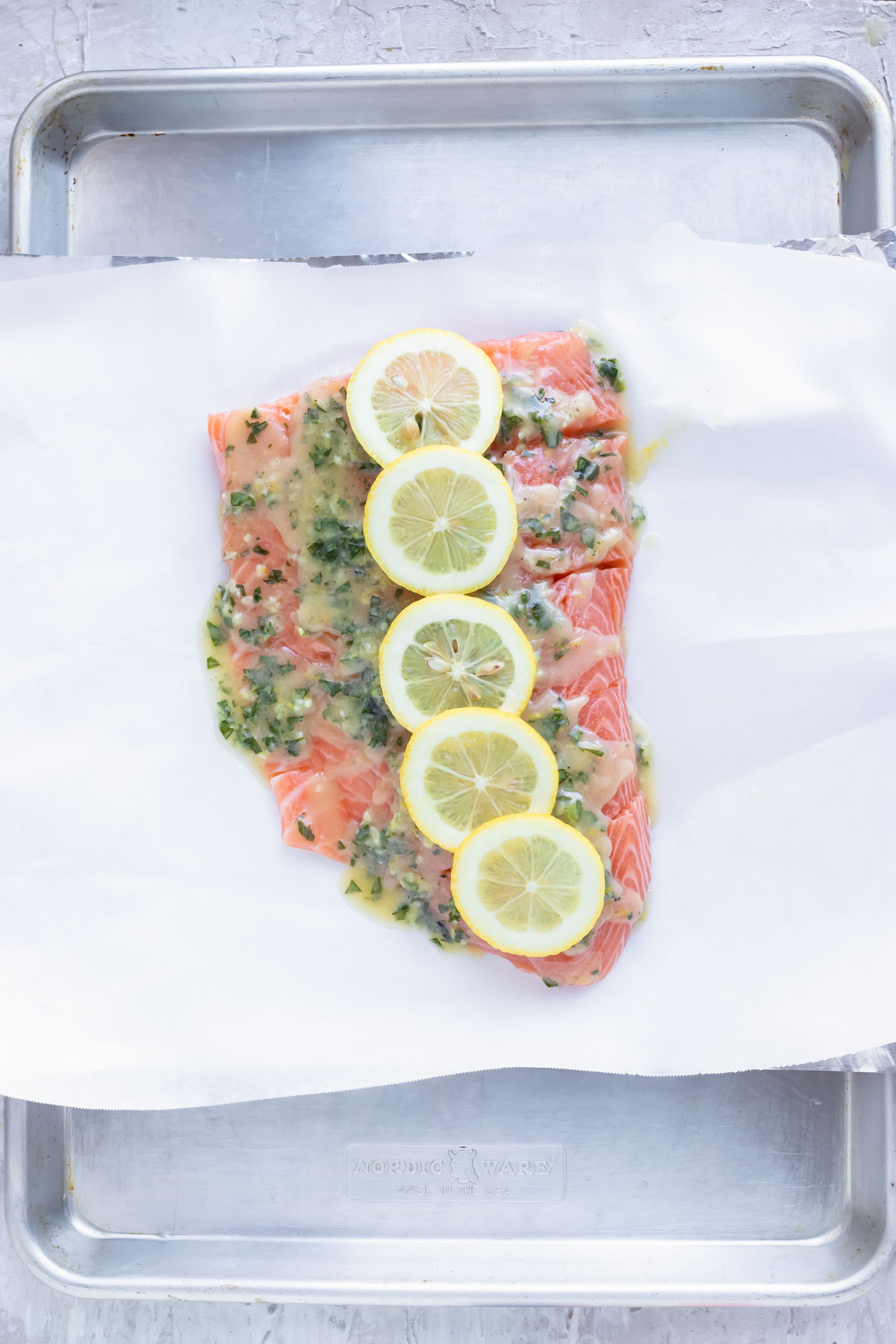
- Season the salmon. In a small bowl, whisk together the melted butter, garlic, fresh basil, lemon juice, salt, and pepper. Spoon half of the lemon-garlic butter over the top of the salmon, spreading it generously across and between the pieces, for full coverage. Save the other half of the sauce for later, when it is finished cooking.
- Add the lemon. Top each portion with a thin slice of fresh lemon. This gives the salmon a little bit of an extra lemony kick while cooking, and provides a lovely garnish effect for the final dish.
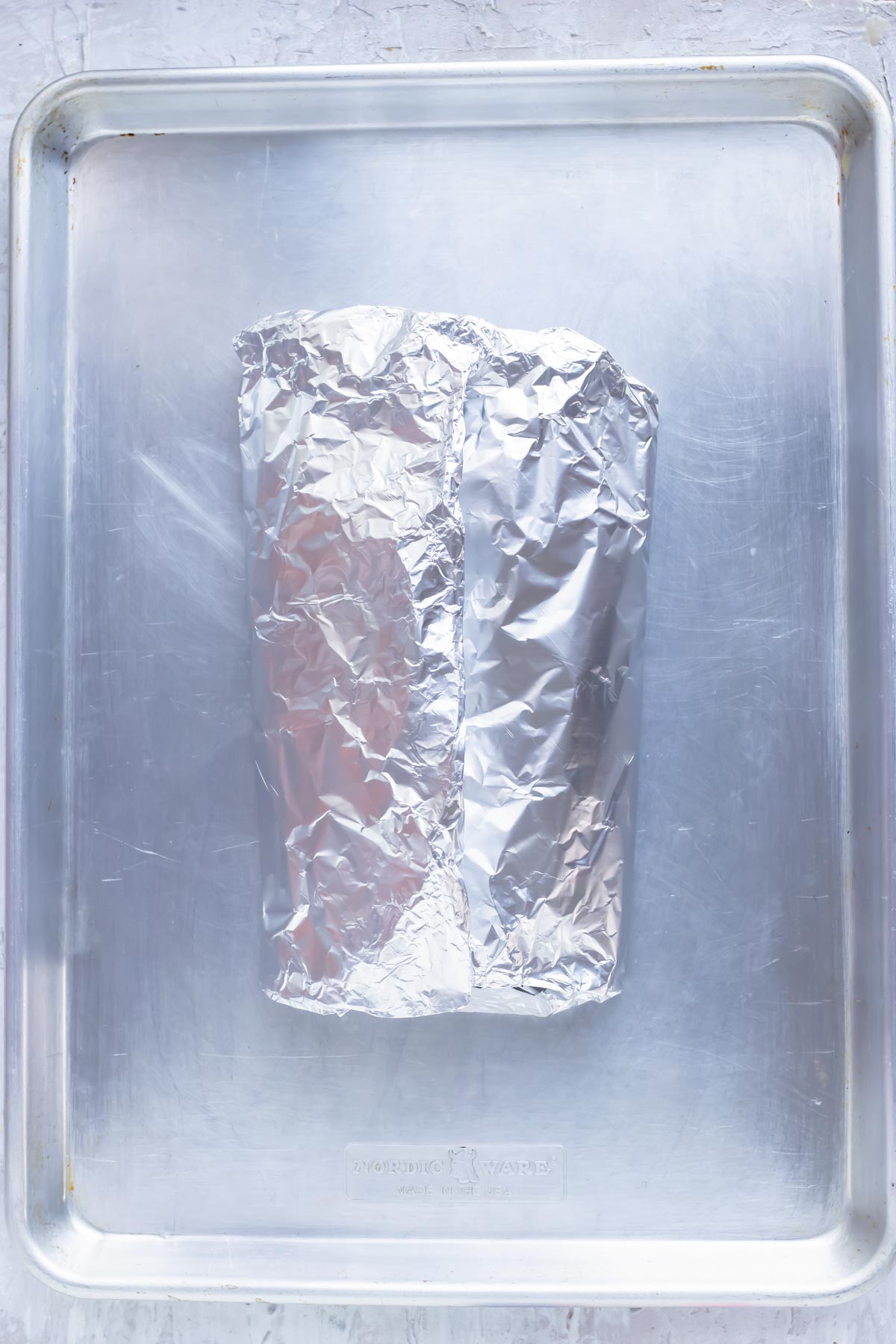
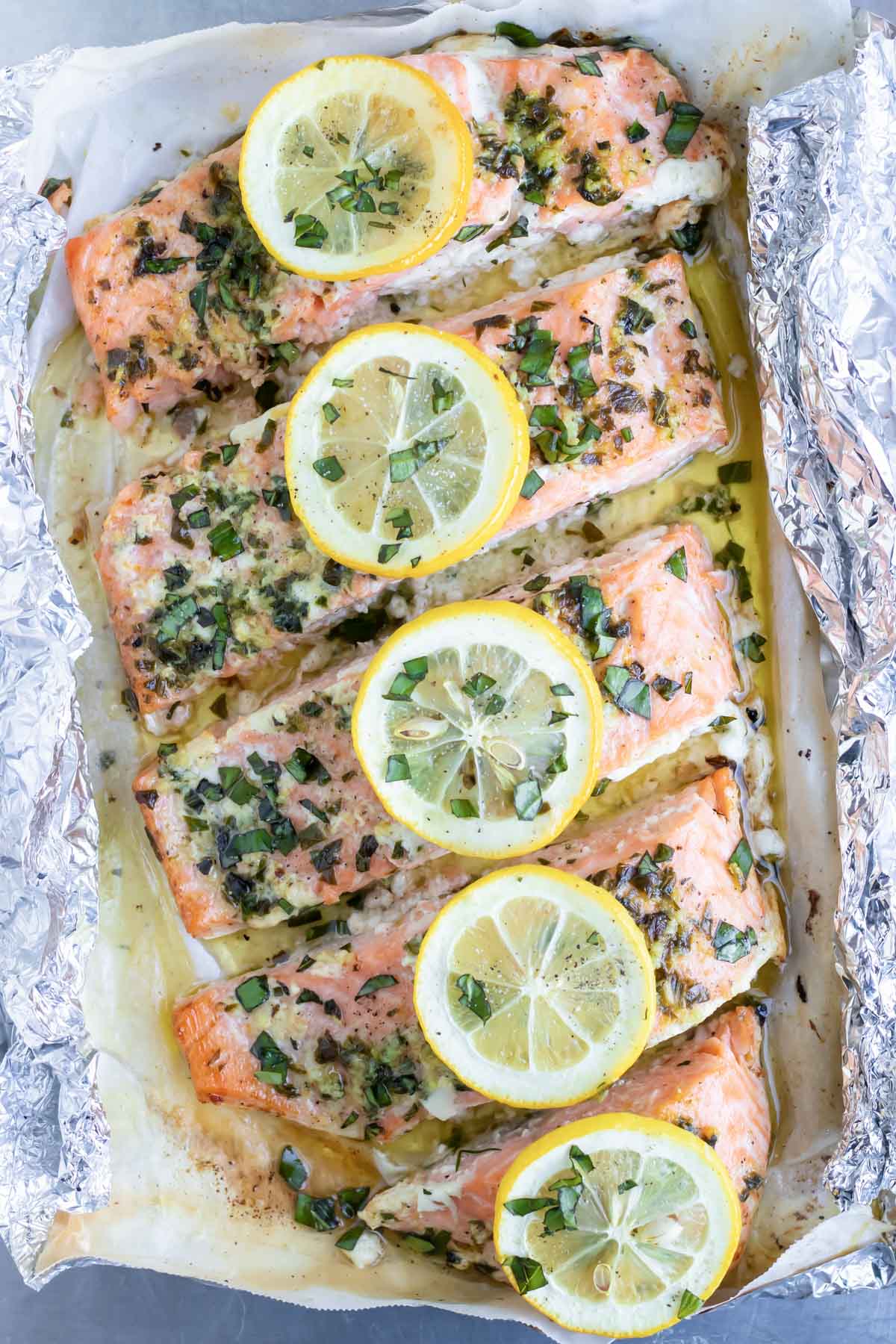
- Seal the packets. Carefully close the parchment paper and aluminum around the fish to create a packet, folding and sealing the edges as much as possible. Make sure that there is nowhere for the lemon-garlic butter to leak out of the packet, and that there is still some room left inside the packets for air ventilation.
- Bake the salmon. Bake at 375℉ for 14-16 minutes without opening it. Pull the salmon from the oven, and open the foil packet, pouring the remaining sauce over the fillets. Ensure the open packet is still folded to keep the butter mixture contained, and return it to the oven under a high-heat broiler for 5-7 minutes. When the fish has just slightly browned at the surface, remove it from the oven and serve!
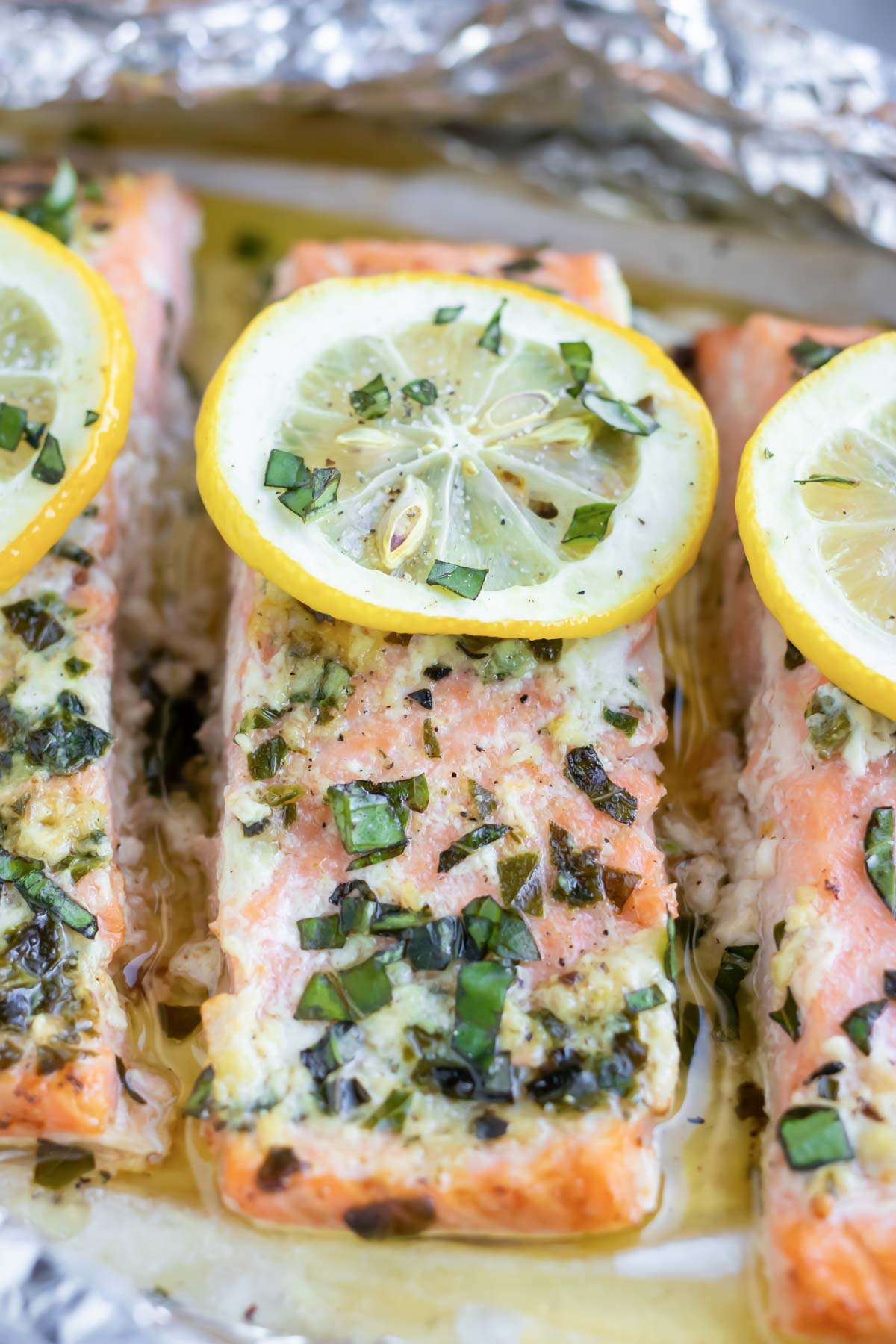
FAQs
When baking salmon in foil, cook for around 15 minutes in the packet, then open it up and broil for another 5 minutes or so to get that crispy skin. For medium-cooked, it’s generally recommended to cook it up to an internal meat temperature of 125-130°F. It’s best to aim for the slightly lower end, as the fish will continue to cook for a few minutes on residual heat even after being removed from the pan or oven. Exact times will change based on the size of the fish. Learn more here about achieving the perfect internal temperature for salmon.
Yes! Salmon is incredibly good for you. It is full of nutrients and fatty acids that benefit your eyes, heart, brain, and skin.
You can freeze cooked salmon for up to 3 to 4 months. For the best results, be sure it is in an airtight container with as little skin exposed as possible.
After salmon has been cooked, it is best enjoyed within 3 to 4 days. As with all food, be sure to follow safety guidelines to reduce the risk of bacteria.
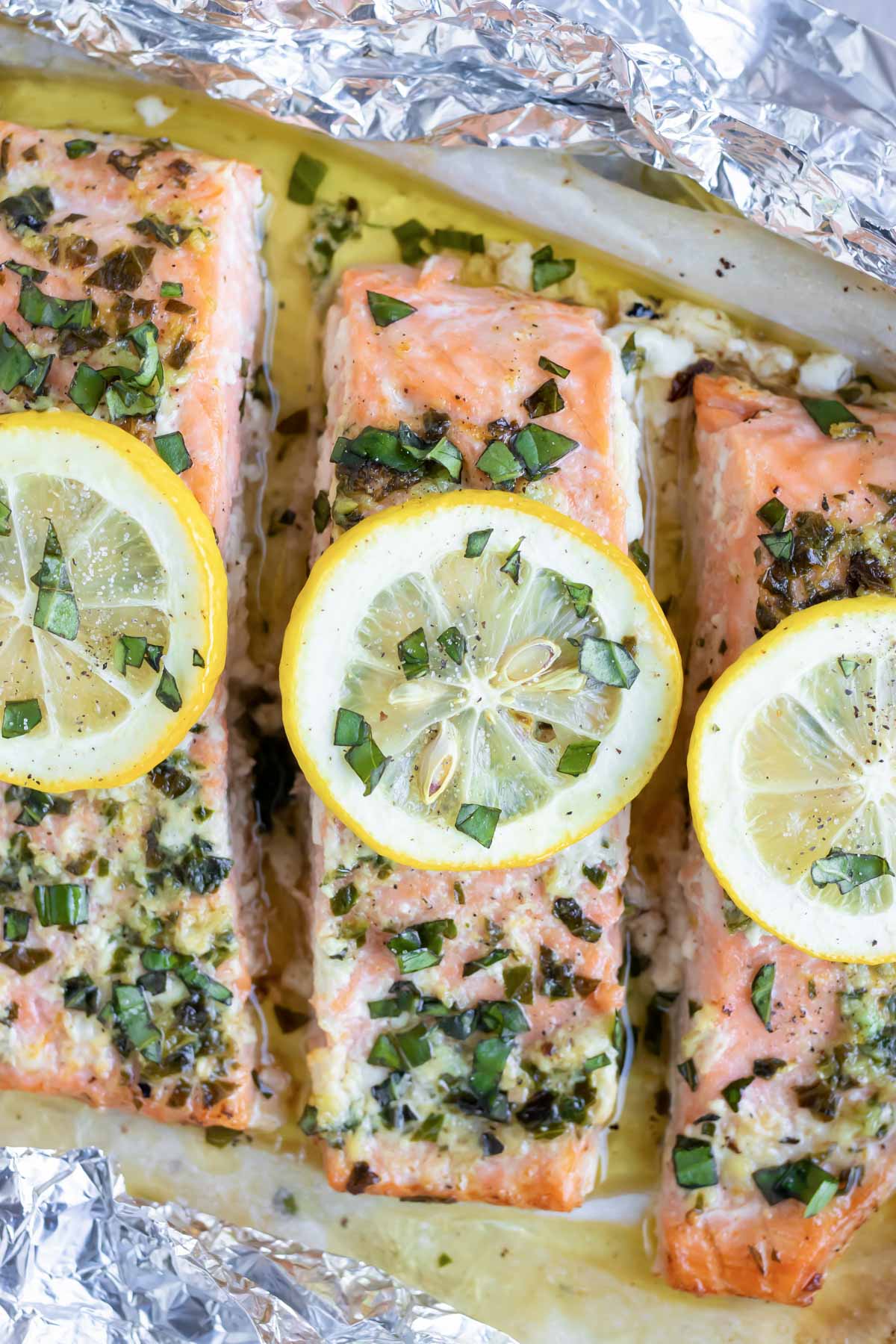
What to Serve with Baked Salmon in Foil?
This fish recipe is a great main dish and goes very well with a number of sides. These are a few different vegetable dishes that can turn this into a tasty meal.
Both Roasted Cauliflower and Oven Roasted Broccoli are good for you and easy to whip up.
Broccoli Slaw and Chinese Green Beans are light and refreshing.
Save time with Air Fryer Brussels Sprouts and Air Fryer Asparagus.
More Salmon Recipes
Make the most of fresh, wild salmon being in season with even more of these amazing recipes.
Blackened Salmon and Teriyaki Salmon are so incredibly flavorful.
Lemon and Dill Salmon and Honey Sriracha Glazed Salmon are easy to make.
Impress a dinner party or friends on special occasions with this Salmon Piccatta.
Tap stars to rate!
Lemon Garlic Baked Salmon in Foil
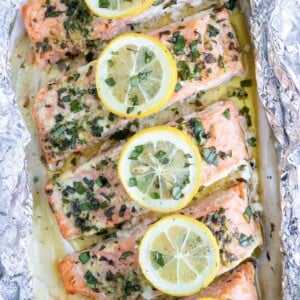
email this recipe!
Ingredients
- 1 ¼ pounds salmon skin on, cut into 5 fillets
- 5 tablespoons butter melted
- 1-1½ cloves garlic crushed
- 2 tablespoons basil finely chopped, packed
- 2 tablespoons lemon juice divided
- ¾ teaspoon salt
- ¼ teaspoon pepper
- 5 lemon slices
- See this recipe in Healthy Meal Plan #1
Instructions
- Preheat oven to 375 degrees.
- Whisk melted butter, garlic, basil, lemon juice, salt, and pepper in a small bowl.5 tablespoons butter, 1-1½ cloves garlic, 2 tablespoons basil, 2 tablespoons lemon juice, ¾ teaspoon salt, ¼ teaspoon pepper
- Place a large sheet of aluminum foil on a baking sheet. Layer a piece of parchment paper that is slightly smaller than the foil on top.
- Lay salmon fillets on paper with a slight gab between each one.1 ¼ pounds salmon
- Pour half of the lemon-basil sauce over salmon fillets. Reserve the remaining sauce for later.
- Top each fillet with one lemon slice.5 lemon slices
- Close paper and aluminum foil around salmon to make a packet. Bake salmon for 14-16 minutes without undoing the foil packet.
- Open the foil packet, pour remaining lemon-basil sauce over fillets and return salmon to oven under a High broil for 5-7 minutes. (Make sure you tear off or fold down any parchment paper that might be sticking up!)
- Watch salmon closely while broiling. Once salmon starts to brown slightly, remove from oven and serve immediately. See this recipe in Healthy Meal Plan #1
Tap stars to rate!
Video
Notes
- Butter: Substitute the butter for coconut oil or a vegan butter alternative. Be aware that the coconut oil will yield a slightly different flavor profile, however.
- Prep Ahead: The sauce can be prepared and the raw fish cut to size ahead of time. These can be stored separately in the refrigerator in airtight containers for up to 24 hours.
- Storage: The leftovers can be stored in an airtight container in the refrigerator for up to 3-4 days.
- Freezing: This dish can be frozen in an airtight container or sealed in a freezer bag for up to 3-4 months.
- Reheating: The best way to reheat this baked salmon is to pop it back into a 300°F oven for 5-7 minutes. It can also be heated up in a covered skillet over medium-low heat for 4-5 minutes.
Nutrition
Nutrition information is automatically calculated, so should only be used as an approximation.

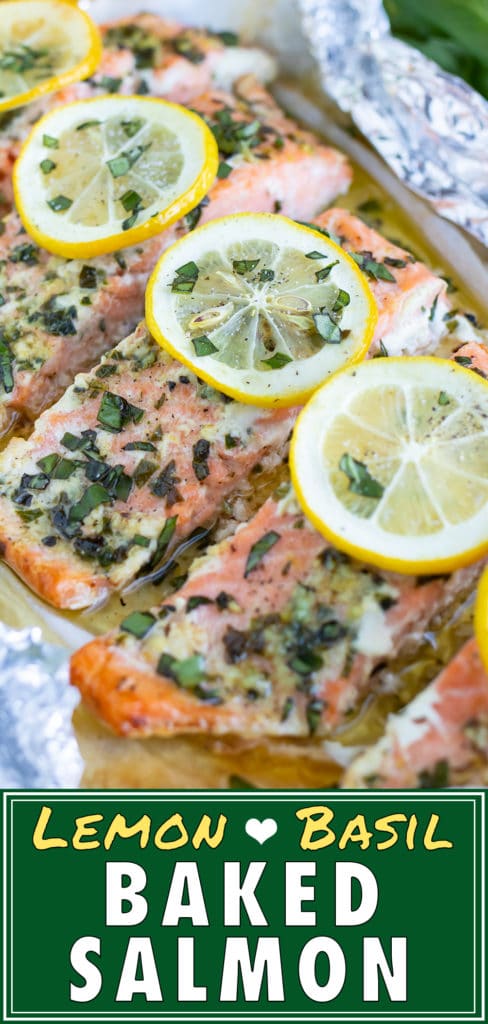
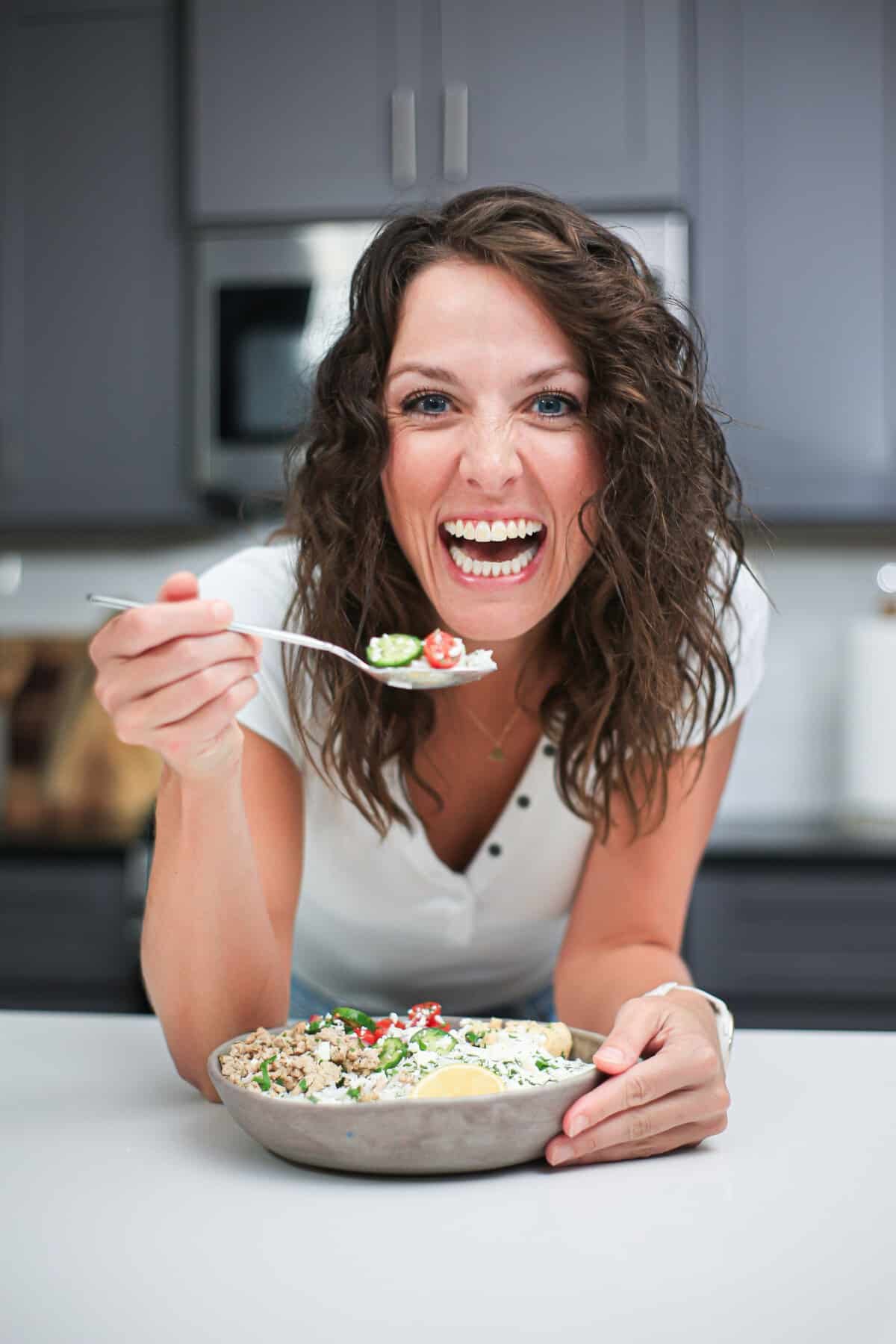
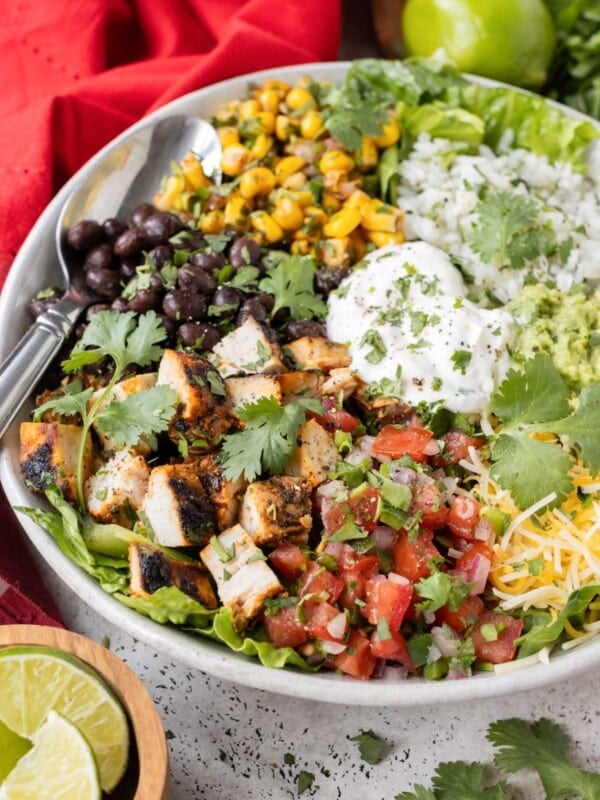
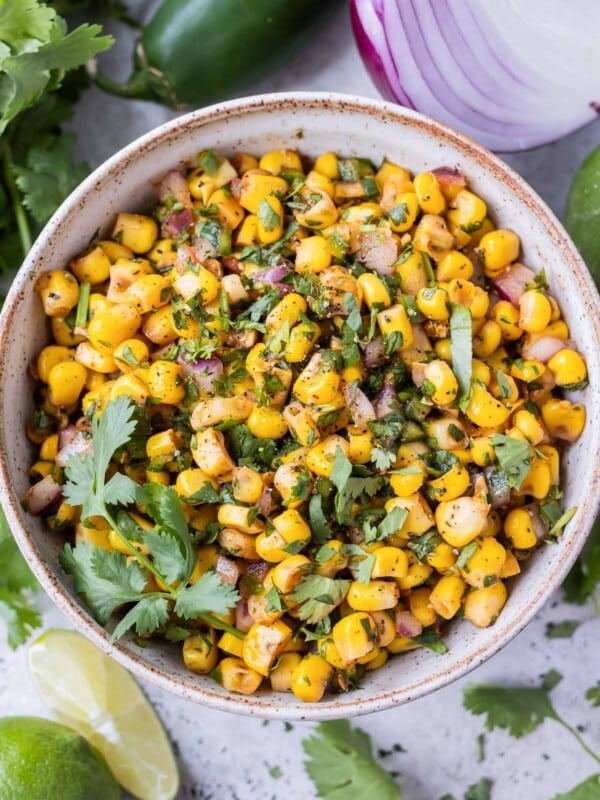
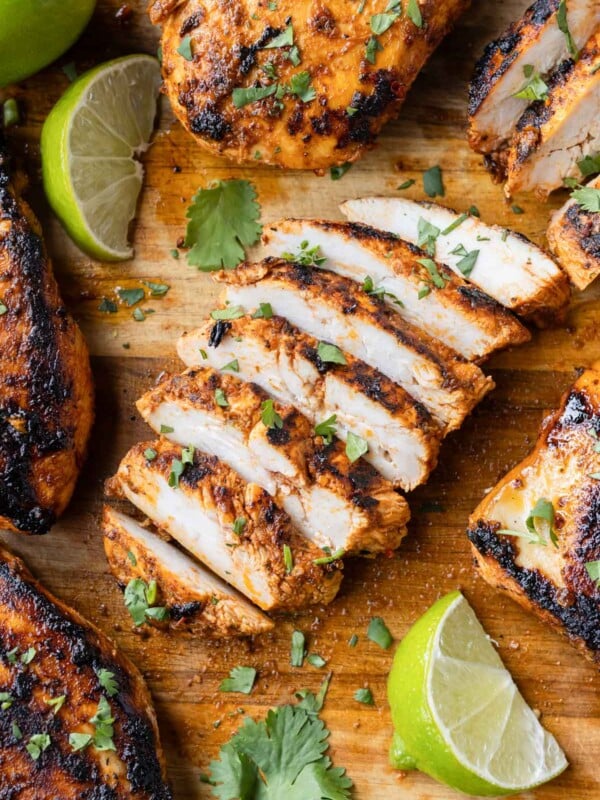
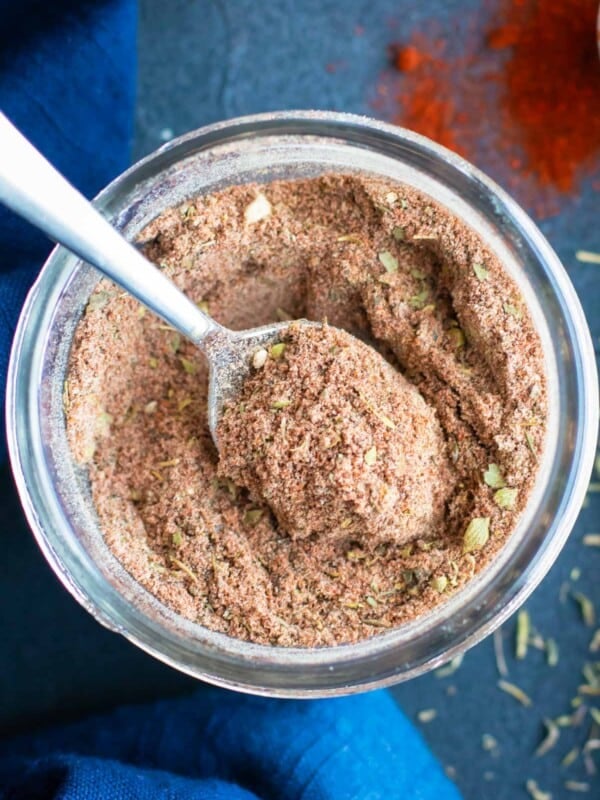









Did you have a piece of salmon that still had skin on the bottom?
Did you cut it off?
Hi Jennifer! We like to keep our skin on and cook it so we can give it to our dog afterwards. It’s completely up to you, though!
My husband just recently started eating salmon and I was searching Pinterest for ways to make it when I ran across your recipe. He absolutely loved it, and I loved how easy it was to prepare and clean up! Thank you!
Yay, Jolene!! I am so happy to hear your hubby enjoyed the salmon recipe. Have you seen the Honey Sriracha Glazed Salmon recipe on the site? If you like a salty-sweet combo it’s delicious!
Five stars! So easy and tasty with basil our neighbor grows and lemon from our trees.
Yay, Leslie! Fresh garden basil and homegrown lemons must taste amazing! Thanks so much for your comment/rating!
Extremely easy recipe producing tasty results. I’m a cilantro lover so substituted it for the basil.
That’s such a great idea, Darcey! Thanks so much for the comment and rating!
Yummo!! Made a great potato salad and made this salmon to go with. My hubby and two boys gobbled it up! Will definitely be on rotation.
Your meal sounds absolutely delicious!! Thanks so much for the comment!
A very easy and healthy salmon recipe! Our family makes this all of the time with the fresh basil from our garden.
I was searching for Whole 30 compliant recipes when I found your pin for this. I’ve been feeling majorly emotional today about the loss of my mom (over 2 years ago) and really resonated with hearing your story. Just wanted to say, so sorry for your loss and sending you love. Also, linking to this recipe on my upcoming “Whole 30 recipes to try” blog post.
Hi Lena. Thank you so much for your comment and compassion. I am also extremely sorry for your recent loss. It never gets any easier after you lose a parent (whether 2 years or almost 10 years now), and there will be many sad days mixed in with happy days, but you do continually learn how to keep going. Thank you so much for including the salmon recipe in your upcoming whole 30 post! I look forward to reading it 🙂 Wishing you a happier and brighter week!
I liked it but advise not to use tin foil. Use parchment paper as a substitute…Read up on the dangers of tin foil including dementia.
Absolutely! Parchment paper is a great substitute for aluminum foil.
Has anyone tried replacing the butter with coconut oil?
Hi Mallorie! I have not personally tried substituting coconut oil for the butter, but think it should be an easy substitution. Coconut oil will definitely have a much stronger flavor but should cook very similarly to butter. I would love to know if you try it out!
Love the lemon basil salmon filet recipe
Thank you, Gene!! I am so happy you love it!
I think the size of chicken breasts has changed dramatically since Julia Child’s day, which could account for some of her shorter cook time.